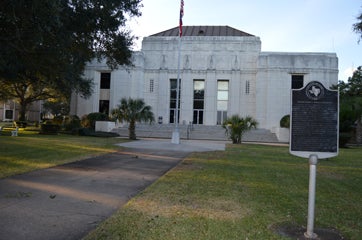PA residents want answers in recovery from Harvey
Published 1:48 pm Saturday, October 7, 2017
By David Ball
City of Port Arthur and Jefferson County personnel, Federal Emergency Management Agency and Small Business Administration personnel were all assembled in a de facto one-stop shop for questions and answers about Tropical Storm Harvey recovery Friday night at New St. John Baptist Church in Port Arthur.
Residents who had questions that could not be answered wrote their questions on notecards and city officials said the answers will be posted at www.portarthurtx.gov and on the city’s information television channel.
City Manager Brian McDougal said the city is hurting now and the flood has affected everybody in the room.
He added that the city’s job is to help residents rebuild. Permit fees have been waived, but currently there are not enough contractors and tradespeople in town to do the work.
Paul Brown, a floodplain manager in the Code Enforcement Department, asked the audience to please be patient about returning calls they made to him.
He explained the city is operating under two sets of FEMA floodplain maps: the effective maps that came out in 1984 and maps used since Hurricane Ike.
FEMA has proposed new maps, but they haven’t been adopted yet.
Brown advised property owners to get a repair estimate, preferably by a licensed or certified contractor through the city of Port Arthur. He cautioned not to pay any contractors up front.
Homeowners can bring the estimate to the code enforcement office to determine if it’s a fair market bid.
If the damages are 50 percent or greater of the adjusted market value of the home, the owner must get a permit and may need to elevate the home. When rebuilding, the house must meet existing elevation requirements as if the home were being built new.
Brown said, “there’s a pot of money” through FEMA for people who have flood insurance. Those who do not have flood insurance must get FEMA assistance to make sure the home is protected for the future.
The city is currently issuing permits to contractors however, officials said, residents may rebuild their own homes on their own.
Juan Ayala with FEMA External Affairs explained people who live in flood prone areas need flood insurance so they won’t go through this every two to three years.
He also explained that in Texas, 858,000 residents were affected by Harvey while millions of others were affected by Hurricane Irma in Florida and Hurricane Maria in Puerto Rico.
“We’ve never been strained like this. We’re doing all we can,” Ayala said. “It takes a village to rebuild a city.”
A new Disaster Recovery Center opened in Central Mall in Port Arthur across from T.J. Maxx. Their hours are from 9 a.m. to 7 pm., Monday through Saturday and 12 p.m. to 5 p.m. on Sunday. No appointments are necessary.
The SBA is in an annex building at Christus St. Mary’s Hospital on Ninth Avenue in Port Arthur.
Disaster Survival Assistance Teams are also knocking on doors, house to house, to check on residents’ welfare.
The cap for individual assistance is $33,3000, though not everyone who applies will get that amount. He added that a denial letter either from FEMA or the SBA is not a final determination. Additionally, homeowners who have insurance must still file a claim.
Shusheel Kumar, public information officer with the SBA, discussed how their program works.
The SBA offers federal low-interest disaster loans to businesses of all sizes, most private nonprofit organizations, homeowners and renters.
Businesses of any size may borrow up to $2 million to repair or replace disaster property damage. The $2 million maximum applies to the combination of property damage and working capital loans.
FEMA may refer a homeowner or renter to the SBA. SBA disaster loans are the primary source of money to pay for repair or replacement costs not fully covered by insurance or other compensation.
Homeowners may borrow up to $200,000 to repair or replace their primary residence. Homeowners and renters may borrow up to $40,000 to replace personal property, including vehicles.
Homeowners and renters should submit their SBA disaster loan application, even if they are not sure if they will need or want a loan. If SBA cannot approve the application, in most case they refer you to FEMA’s Other Needs Assistance program for possible additional assistance.
The SBA refinances mortgages at 1.75 percent and relocation is done on a case-by-case basis where a resident may be able to move across the city.
He said FEMA can get residents started, but it will be the SBA who will do the “heavy lifting” in rebuilding.





